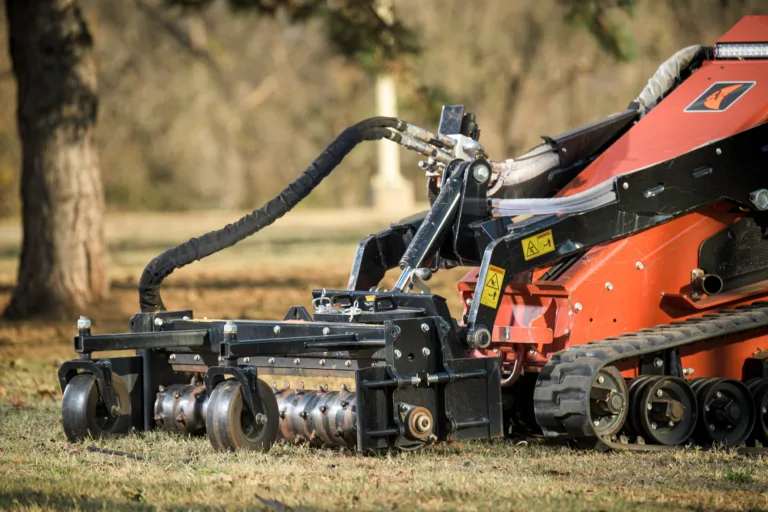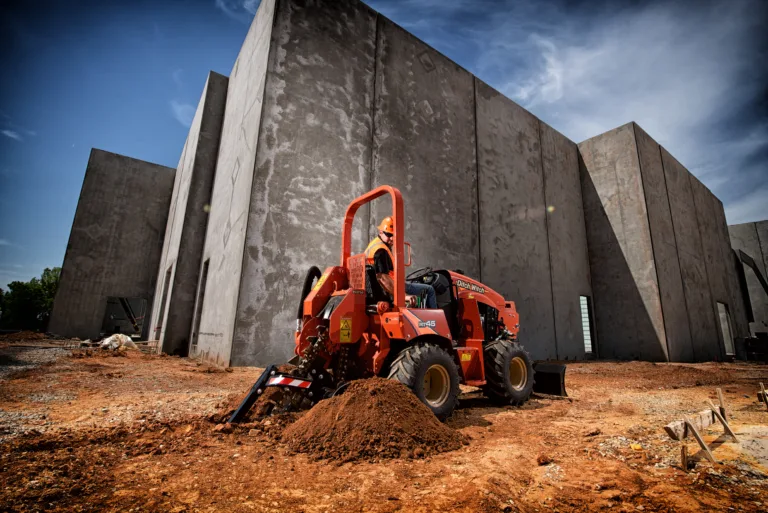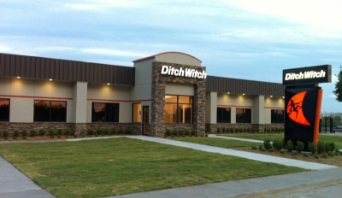Featured In: Trenchless Technology
Fiber deployments across North America are on the rise as individuals and businesses clamor for high-speed and more reliable access to the Internet to placate their Netflix needs or to conduct day-to-day business in today’s digital world.
That increase in activity is good news for the trenchless industry and the horizontal directional drilling (HDD) segment in particular, as fiber deployments increase in congested urban areas. Unlike the last boom in fiber and telecommunications installations, which bottomed out in the early part of this century, analysts expect this run to be more sustainable as much of the continent is still untapped when it comes to fiber.
According to its most recent survey, the Fiber to the Home (FTTH) Council Americas shows that fiber deployments in the United States grew 13 percent in 2015. with nearly 3 million homes passed. The FTTH Council released the survey, completed by RVA LLC, in November 2015.
“From our survey of North American broadband providers, we have found that fiber to the home deployment has continued to grow steadily and 2015 marks the second biggest year for expansion since the technology became available,” said Michael Render, president of RVA LLC, in a news release about the report. “The industry is poised for substantial growth over the next five years.”
In our 2015 Horizontal Directional Drilling Guide cover story that covered an overview of the HDD market, Chris Daum, president and senior managing director of FMI Capital Advisors, said that the mobile network bandwidth is expected to expand 500 percent over the next four to five years. “The increase in capital spending for communications and broadband is favorable for the HDD market because it portends more new construction, more fiber deployments because of Google, AT&T and CenturyLink,” Daum said in the article. “Their planned build-outs and private fiber network deployments — all of that will portend to more construction and will drive HDD where these deployments are taking place, into the neighborhoods into the urban infrastructure that is done predominantly underground.”
That story, which focused on the manufacturer-end of the industry, also notes that contractors are spending their dollars on new HDD rigs to handle the influx of work, buying both compact and midsize rigs. According to the experts quoted in the story, the size, speed and power of these machines are ideal for the fiber installation market, which see fiber being shot out in 600- and 700-ft lengths.
Daum agrees about the difference of today’s fiber/telecom market to years past. “The fiber deployments of the late 1990s and early 2000s were highly speculative, meaning they were wholesale, long-haul fiber buildouts because of the Internet boom and dot com bump. In many respects, a lot of that dark fiber and urban interconnects ended up being empty conduit,” Daum explains. “Back then, HDD was somewhat in its infancy as an acceptable technology that was unproven and had not been adopted as widely. Vermeer and Ditch Witch pioneered a lot of that growth.
“Flash forward 15 years later and we are living in a bandwidth-rich, interconnected world with a more mature Internet with completely mature e-commerce with demand for data being exponentially greater than it was before. It’s a totally different environment than before…The really big difference is that we weren’t even talking about video broadband. We weren’t talking about mobile data and we certainly weren’t talking about 5G. That’s all taken place in the last five to seven years.”
Getting Connected
In the United States, 26.4 million homes are passed — meaning that fiber is available — and 12.3 million are connected, representing nearly a 50 percent take rate. Across North America, including Mexico and the Caribbean, there are approximately 34 million homes passed.
“You wouldn’t live in a house where you had to watch your electric or water consumption. You don’t even think about it,” says Heather Burnett Gold, president of the FTTH Council. “Why should you be curtailed in what `you can do over the Internet because you have capacity constraints on your broadband?”
Gold says that individuals and businesses should not have to worry about their broadband capacity. “It is something that should always be there whenever they need it,” she says. “It is important for people to have the improved capacity, as there is an untapped creative structure that opens up when people have access to fiber.”
In addition to speed, there are economic benefits to installing fiber as well. Two years ago the FTTH Council studied similar communities both with and without fiber. What it found was that communities with access to gigabit access saw about a 1.4 percent GDP improvement over communities that did not. The Council also completed a real estate analysis that showed home values increased 1.3 percent if it was connected to a fiber network and another 1.8 percent on top of that if the connection was to gigabit service.
This recent boom in fiber deployment began in 2011, which coincides with an uptick in the HDD market. In October 2015, Grand View Research, a market research and consulting firm, released “Horizontal Directional Drilling (HDD) Market Analysis by End-use (Utilities, Telecommunication), And Segment Forecasts To 2022.” In the report, Grand View Research projects that the global HDD market size is expected to reach $14.95 billion (U.S.) by 2022.
“Projected to grow at a compound annual growth rate (CAGR) of 15 percent from 2015 to 2022, telecommunications is expected to drive the HDD market over the forecast period. Fiber and telecommunication cable deployments have witnessed an upsurge over the last few years and are not expected to show any signs of weakening over the next seven years,” the Grand View Research report summary states. “The digitization trend has been gradually adopted by both developed and developing countries worldwide and cable and broadband providers are striving hard to expand their networks to address the growing demand.”
Hotspots for fiber in the United States are Minnesota and the Dakotas, the Mid-Atlantic States, buoyed by Verizon’s fiber installations, and Tennessee, which has a strong municipal build component.
“Through the middle part of the country, north to south, plus the East Coast, is where we’ve seen the most deployment,” Gold says. “The West Coast has been kind of slow to get going for various reasons, but I would think we will start to see them moving quicker as we see Google doing some work in San Francisco. Two of our members,SpiralNet and Sonic, are both building in California as well.”
Canada is starting to grow with Toronto, Vancouver, and several smaller competitors in rural areas tackling fiber deployments. The biggest rollout of fiber in Canada is the Maritimes region, where Bell Alliant, part of Bell Canada, jumped in with both feet, thanks to pressure from an aggressive cable company.
“It’s just in its beginning phases in Canada, spurred by competition from the cable companies that have been more aggressive,” Gold says.
Who’s Connected?
Some reports state that North America as a whole is lagging behind in terms of fiber connectivity, but Gold is quick to dispel those remarks.
“We are close to between 20 and 25 percent coverage, so I think we’re doing great especially when you consider that we rely primarily on a private market and a very dis-aggregated public funding model with a myriad of operating ownership styles,” she says. “In the U.S., we have as many different ownership models as we have possibilities.”
In terms of ownership, Gold lays out several models.
There is the demand aggregation, which relies on a set number of users committing before an installation occurs. These include private companies or in some instances, municipal utilities that grow tired of waiting for an outside company to come in and they install the fiber to serve themselves as well as the community.
Rural incumbents with access to government funding through Connect America Funds and low cost loans from the Department of Agriculture’s Rural Utility Services. Many of those have deployed fiber to connect the rural areas to the global economy, Gold states.
There are also competitive over-builders with access to some of the government funds when no valid provider is available. These companies have also used the demand aggregation model. These providers tend to be in the rural and small- to mid-size cities.
In the larger communities providers use, what Gold refers to as the Google model, which uses demand aggregation, as well as getting the municipality to work with them to overcome entrance issues – like street access, right of way access, expedited permitting, etc.
Public-private, partnership (P3) models, are slowly coming to the forefront. In this instance, both the community and provider share the risk and responsibility of ownership and installation.
HDD’s Role
One of the companies benefitting from the growth is ADB Companies Inc., a St. Louis, Mo.-based directional boring contractor and part of the Keeley Companies. ADB has projects ongoing in about 15 states and it spent the last decade working on fiber installations. ADB’s business is 75 percent underground installations, of which 60 to 70 percent is related to fiber installation.
“It was very slow at first, but it has picked up a lot in the last five years,” says Chad Johnson, ADB Companies president. “We work with all of the major carriers.We have a well-rounded customer base.”
Johnson attributes the growth in fiber work to companies like Google Fiber and AT&T pushing for more installations across the country and trenchless technologies in particular have helped fuel the race thanks to the speed in which a contractor can install the necessary infrastructure with minimal disturbance to surroundings. This occurs more so when fiber is installed in more congested urban areas rather than a rural setting.
“There is room for growth as companies race to get fiber to the home,” Johnson says. “I see underground construction being busy for quite some time.”
The work is such that ADB has experienced growth in the last few years and its 45 Ditch Witch HDD rigs are constantly busy as more providers look to have infrastructure buried.
“We are always looking for good qualified people who fit into our culture and know how to do directional drilling,” Johnson says. “That’s an ongoing challenge that will continue as long as the work continues.”
Networx Cabling Systems (NCS), based in Flagstaff, Ariz., operates in Arizona and eastern California and works with several telecommunications and cable companies installing both aerial and underground services. About 60 percent of its work is fiber-related.
“In the last five years, I’ve seen a huge upswing in installing fiber via directional drill,” says Bill Tippett, president NCS. “Fiber to the home is where we are headed in this country and it will drive the increased use of HDD. What is driving its use for fiber construction is the perception that it should be done this way. The public is hip to it and more and more they are asking why it isn’t done this way.”
NCS relies on a pair of Vermeer D24X40 rigs, a Vermeer D16x20 and a Ditch Witch JT30 All Terrain to complete its HDD installations.
According to Tippett, many companies will piggyback on existing aerial systems where available for cost purposes, but most new installations are requesting HDD. In some areas, he says, education is key because people do not realize or understand HDD, but by his estimation, those reservations are slowly going away and in the next five years will be gone.
“My hope is that one day, the directional drill is as ubiquitous on construction projects as the back hoe,” he says. “It’s happening, as the overall rate of acceptance has increased in the last five years.”
Both contractors cite the speed of installation and lack of disturbance as the major benefit and reason for companies requesting trenchless installation of fiber.
“Competition is strong and keeping cost of HDD projects down,” Tippett says. “Things are definitely trending toward HDD. It’s a matter of adoption as manufacturers and contractors continue to educate the public.






